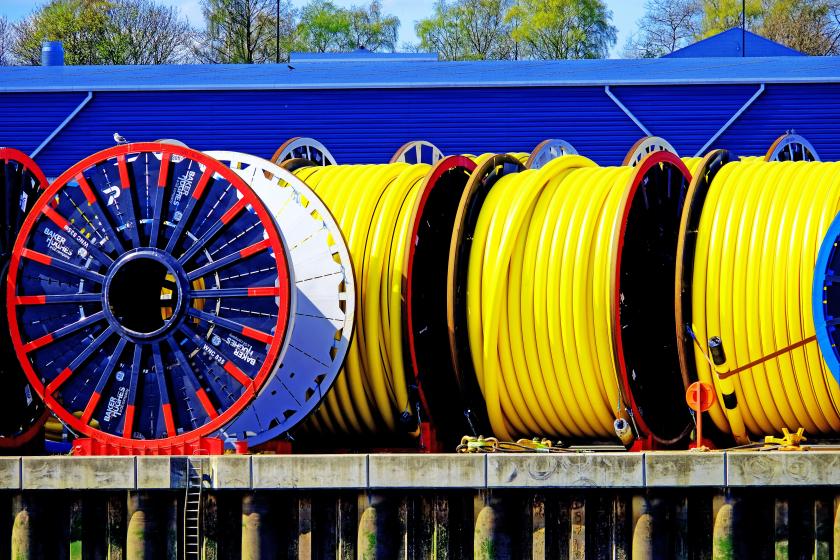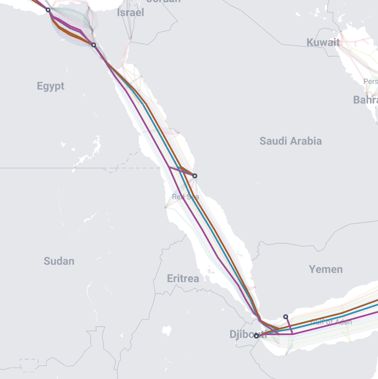

- Details
- Published on 18 March 2024
(Credit: Wilf Doyle / Alamy Stock Photo)
With no viable alternatives, governments, enterprises, and operators team to tackle longstanding undersea cable resiliency challenges.
Is network resiliency able to reach beyond five nines and SLAs for enterprises seeking always-on services?
Given recent headlines and discussion in the wake of undersea cable cuts in the Red Sea, the answer is still no for multinationals. The situation is best described as business interruption as usual.
On Saturday, February 24, three different cables were reported to have suffered faults:
These international systems connect far-apart states like South Africa, the United Kingdom, and China. The faults off the coast of Yemen need to be repaired. The work is tough to do in a narrow, heavily traveled shipping lane that doubles as a war zone with a concentration of submarine cables on the sea floor.
Fighting in the Middle East is a concern as enterprises and the telecom industry rely on undersea cables to carry the bulk of their intercontinental traffic.
Since late February, three more faults in the region have been reported, according to TeleGeography, a research firm that builds and maintains massive data sets that are used to monitor, forecast, and map the telecommunications industry. One report has a ship dragging an anchor as the culprit, which the firm claims is the second most frequent cause behind cuts/faults of these business and communications lifelines.

Three cables with faults in the Red Sea from TeleGeography's Submarine Cable Map. Note: The cable map illustrates the topology of cables but does not show the physical path.
The cause of the undersea cable disruption is still uncertain
Whodunnit? Since then, no open-source evidence has come out to support the claim that Houthis, part of a Yemen civil war, were responsible. "But here's one thing we do know: accidents happen all the time," noted Tim Stronge, Research VP at TeleGeography, in a March 5 advisory. "On average, two cables suffer faults somewhere in the world every week!”
The research firm tracks 574 active and planned submarine cables as of early 2024.
Suspicious activity or not?
Stronge does not believe the three almost simultaneous cable faults are overly suspicious.
“Geological features or permitting issues have occasionally forced installers to lay different cables in close proximity to each other,” he explained. Such a situation increases the danger of a multi-cable fault.
In 2012, multiple cables suffered faults off the coast of Alexandria, Egypt. “Initial speculation blamed saboteurs, but many in the submarine cable industry now believe that a single ship dragging its anchor was the cause.”
Is it time to panic?
Although the Red Sea cables carry 90% of Europe-Asia communications flow through them, operators have built a lot of redundancy into the network. The ability to reroute traffic is increasingly available.
There are fourteen cables already laid on the Red Sea. Even if three are down, eleven remain, wrote Stronge. “Data destined for damaged cables may be rerouted southward around the Cape of Good Hope or eastward through Asia and the United States.”
Tougher times ahead for undersea cable industry
Houthi attacks on ships make life tougher for the undersea cable industry, which could hurt enterprises.
- Vessels that are sinking or sunken present new underwater hazards to cables and cable ships. The cables typically lie on the ocean floor.
- Shipping attacks have caused marine insurance rates to spike.
- Combined, these two may make the installation of new cables in the Red Sea too prohibitive and make repair risky.
Items for governments to act on
Governments are the ones on the hook for the long-term security of subsea cables. The International Cable Protection Committee (ICPC) has created a list of 16 action items.
ICPC membership comprises governmental administrations and commercial companies that own or operate submarine telecommunications or power cables, as well as other companies that have an interest in the submarine cable industry—including most of the world’s major cable system owners and cable ship operators. The group says the primary purpose of the ICPC is to help its members improve the security of undersea cables by providing a forum in which relevant technical, legal, and environmental information can be exchanged. U.S. members include JP Morgan Chase, Wells Fargo, University of Hawaii, U.S. Navy, Johns Hopkins University, AT&T and Ciena.
One priority, which is a work in progress, is changing rules and regulations to open new seabed lanes and landing zones for cables. Having physically diverse zones provides options in locating where cables come ashore.
Flirting with disaster
“Some government regulations (such as environmental protection) may unintentionally herd cables into narrow corridors,” explained Stronge. “As we’ve seen time and time again, a lack of physical diversity invites disaster.”
Seeking alternatives
When it comes to alternatives to undersea cables, the cupboard is bare. Satellite connections are not fast or large enough to carry the traffic load on submarine pipes. 5G is not mature enough to help.
One approach is to install cables over alternative routes. As we reported in December, the SeaMeWe-6 cable project seeks to construct a cable that links Asia, the Middle East, and Europe via a route through India rather than the Red Sea. The article noted that the U.S. “snatched away” control of the project from China due to the importance of having alternative paths to send data.
Related articles:

